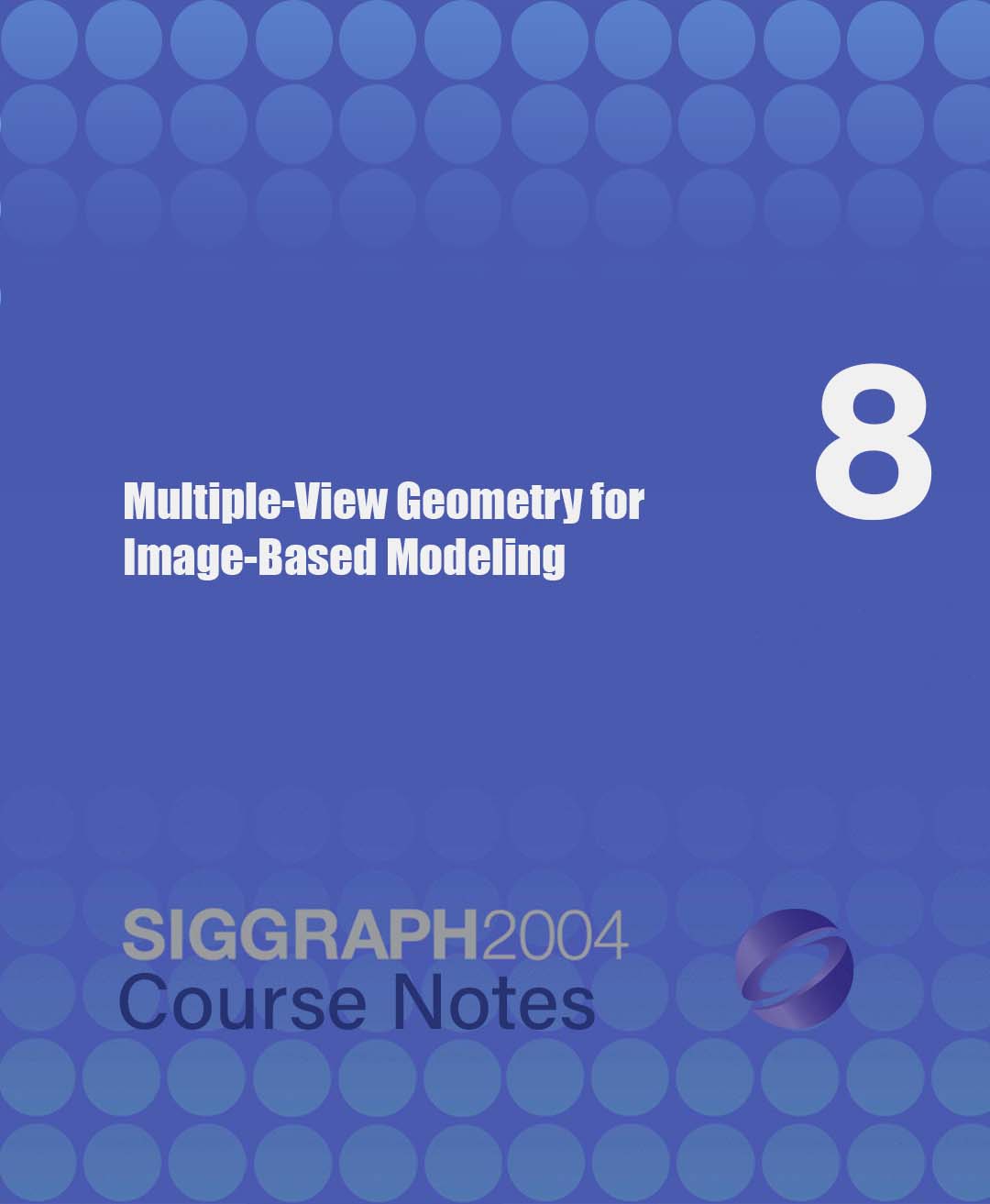“Multiple-View Geometry for Image-Based Modeling” by Ma, Kosecka, Soatto and Vidal
Conference:
Type(s):
Title:
- Multiple-View Geometry for Image-Based Modeling
Organizer(s):
Presenter(s)/Author(s):
Entry Number: 08
Abstract:
Prerequisites
Basic knowledge of image formation and modeling, 2-D and 3-D geometry, rigid-body transformations, and linear algebra, as obtainable from experience with image-based rendering or an introductory-level computer vision or graphics course. Unlike traditional treatment of this subject, this course does not require knowledge of tensorial algebra or projective geometry.
Intended Audience
Academicians, graduate students, industrial researchers or developers who are interested in state-of-the-art vision theory and techniques for applications such as 3D modeling, motion capture, visualization, virtual insertion and reality, and video indexing and editing.
Description
A comprehensive introduction to multiple-view geometry, with a coherent spectrum of algorithms that systematically extract 3D information (motion, structure, and camera calibration) from 2D perspective images. The technical core of the course provides a simple characterization of all constraints among multiple images that can be utilized for 3D reconstruction in a simple matrix rank framework. The course covers essentially all the technical steps and details necessary for the entire reconstruction process: image formation, feature extraction, feature tracking and matching, two-view reconstruction, camera calibration and auto-calibration, multiple-view reconstruction, and incorporation of various types of scene knowledge. It provides a step-by-step recipe for 3D reconstruction from image sequences and demonstrates a real-time 3D motion and structure estimation system, together with its application to real-time virtual insertion in live video. The course also incorporates the most recent developments on reconstruction of dynamic scenes containing multiple moving objects.
Applications of this technology range from special effects (scene or camera motion capture, virtual insertion, image-based modeling and rendering) to computer graphics, photogrammetry, surveillance, autonomous robotics, medical imaging, and virtual reality.





